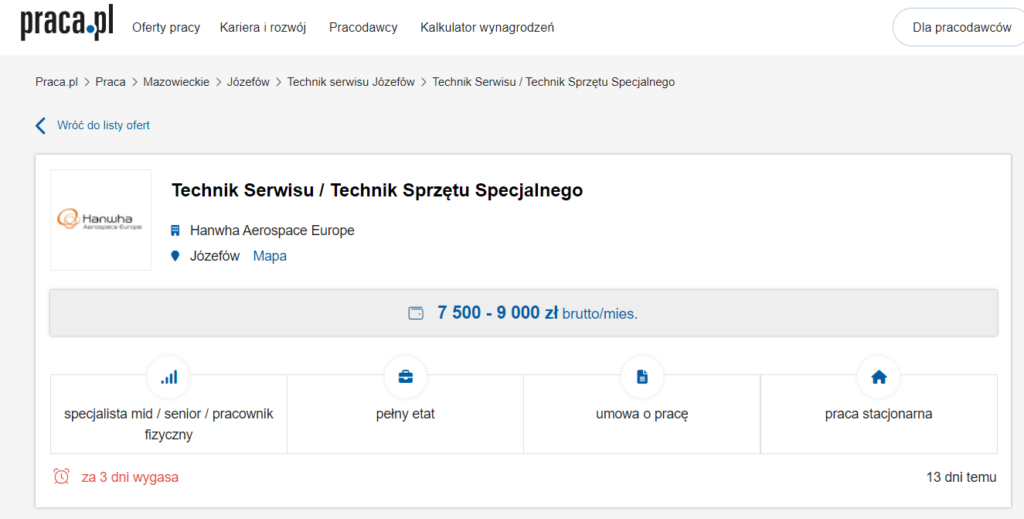Hanhwa To Open Service Center In Poland
At the beginning of April, Hanhwa Aerospace officially opened its office in Warsaw, marking another step in cooperation with its European customers and partners. The rapid expansion of the South Korean manufacturer to the Old Continent was due to the massive procurement of military equipment by the Polish Armed Forces along with strong interest from other countries for Korean products. However, the opening of the office is only the first stage of Hanhwa operations in the region. According to various sources, Hanhwa is also preparing to open their service center near Warsaw. A recent job listing published on recruitment service praca.pl supports this.

Hanhwa’s best-selling product on the European market is their K9 self-propelled howitzer used by Norway, Finland, Poland, and Turkey. Evidence suggests that the maintenance services will initially focus on that product. Yet, the Polish interest in the procurement of further K2 main battle tanks may lead to the expansion of the Korean facility. Billy Boo Hwan Lee, the CEO of Hanhwa trade representation in Poland, stated that the company looks to settle in Poland and expand its operations, including setting up a production plant.
One of the main reasons for the opening of the office is Hanhwa’s desire to continue its cooperation with the Polish government. The company will also potentially look for more options to include local armament companies in manufacturing components for the K9 and M239 Chunmoo MLRS which will undergo further domestication. Back in December 2023, Hanhwa signed an executive agreement for the deliveries of the K9PL howitzers which have not been developed yet.
The opening of the office and Hanhwa’s plans do not remain without some commentators’ criticism. One criticism of giving Hanwah the lead on maintenance of equipment rather than negotiating for more offset agreements and know-how procurement is that it may lead to an unexpected rise in exploitation costs and lower the potential of the army’s maintenance facilities. This however remains to be seen as the Polish Armed Forces’ relationship with the manufacturer evolves.

